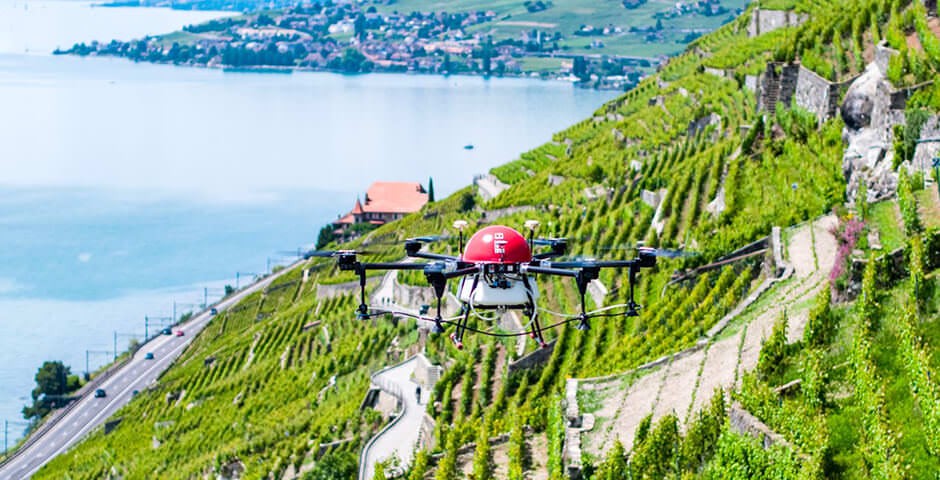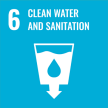
Sustainability is the most effective answer to increased environmental awareness. But the means of achieving it can sometimes take unexpected forms, especially if tradition can be combined with the latest technologies. A case in point is the partnership between Swisscom and Aero41 that shows 5G technology can be used in viticulture with highly effective results. Swiss start-up Aero41 uses drones to carefully treat vines with crop protection agents. 5G makes this method more effective through real-time data processing.
The first drone for viticulture
Swiss start-up Aero41 is making life easier for winegrowers and may even help to improve wines: the AGv1 is Europe’s first drone approved to apply crop protection agents. Flying at just 1.5 to 3 metres above the vines, it is also the only one that can spray directly onto the leaves. Until now, winegrowers have had to resort to helicopters to treat their vines. “Our drones work with surgical precision,” says Frédéric Hemmeler, CEO of Aero41. “A helicopter uses the watering can principle and all the plants receive the same dose of product.” The drones allow pesticide use to be reduced to a minimum.
With a full payload of 16 litres, a drone weighs up to 40 kilograms and can spray a 16-hectare vineyard in six to eight minutes. Many winegrowers prefer organic products that are less aggressive than chemical agents. No problem for this drone.
Aero41 is currently running a three-year test phase in France. It is investigating the advantages that drones offer agriculture. They are particularly useful on steep slopes, such as those found in Champagne, Burgundy, Alsace and the Côtes du Rhône. 5G may even play a part in producing better wines in the future.
AI and latency
22 drones are already in use in the vineyards of Vaud and Neuchâtel. For Frédéric Hemmeler, it is clear that this number will not be enough. He wants to equip his drones with artificial intelligence and make them even more powerful using Big Data – developments that depend on the next generation of mobile networks. “5G is like a virtual fibre optic line,” says Frédéric Hemmeler. The data for controlling drones, industrial robots or autonomous vehicles must be transmitted with as little latency as possible. It’s an exciting development for Frédéric Hemmeler: “With 5G, latency times drop to practically zero, meaning that we can process all our data in real time.”
While the latency times with 4G are still around 30 to 40 milliseconds, they will not be above 5 or 10 milliseconds with 5G. “This will allow us to treat a vineyard in an even more targeted, faster and more efficient way.”
Reduced pesticide use and lower energy consumption are essential factors for more sustainable viticulture – which is why Swisscom is supporting Aero41 with the marketing of its products. Swisscom hopes that the development of 5G in Switzerland will meet the expectations of Aero41, and those of the winegrowers who want to offer “greener” wine.
Latest news about Swisscom
Subscribe to News
Contact us
Address
Swisscom
Media Relations
Alte Tiefenaustrasse 6
3048 Worblaufen
Postal address:
Postfach, CH-3050 Bern
Switzerland
Contact
Tel. +41 58 221 98 04
media@swisscom.com
Other contacts
Contribution to sustainability
Aero41’s vine-spraying drones make a significant contribution to achieving the following UN sustainable development goals:

SDG 6: Drones allow pesticide treatments to be targeted to the needs of the vines, thus helping to protect the groundwater .

SDG 13: The use of electric-powered drones rather than petrol-driven helicopters makes agriculture more climate friendly.

SDG 15: Drones provide an effective way of using organic pesticides which contribute to the sustainable use of terrestrial ecosystems and may reduce land degradation and biodiversity loss.
